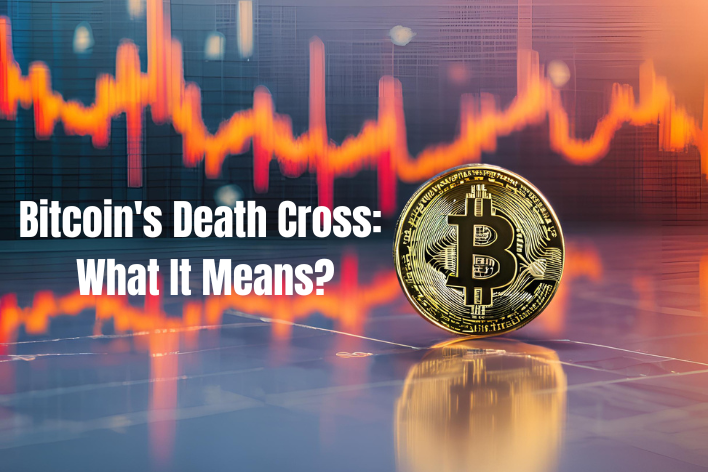Bitcoin's Death Cross: What It Means for the Crypto Market
Introduction:
In the ever-evolving world of cryptocurrency, technical analysis plays a pivotal role in guiding investment strategies and market expectations. One such significant technical pattern is the "Death Cross," a term that often sends ripples through the trading community. This bearish signal occurs when a short-term moving average crosses below a long-term moving average, typically the 50-day and 200-day simple moving averages (SMA), respectively. Recently, Bitcoin has been on the verge of forming this pattern, raising questions about its potential impact on the broader crypto market. In this blog, we will delve into what a Death Cross means, explore its historical context, and analyze its implications for Bitcoin and the cryptocurrency market as a whole. Understanding this key technical indicator is crucial for navigating the potential volatility that lies ahead.
Current Situation
As of early August 2024, Bitcoin is on the cusp of experiencing a critical technical pattern known as the "Death Cross." The 50-day simple moving average (SMA) has declined to $62,332 and is steadily trending downward. In contrast, the 200-day SMA is currently at $61,605. The impending crossover of these two key moving averages suggests that a Death Cross is imminent. This potential formation has drawn significant attention from traders and analysts, as it is often considered a bearish signal that could indicate a prolonged period of downward momentum for Bitcoin. As the market closely monitors this development, the outcome could have substantial implications for Bitcoin’s price trajectory and the broader cryptocurrency market.
Implications for the Crypto Market
The imminent Death Cross in Bitcoin has significant implications for the cryptocurrency market. Historically, this technical pattern is seen as a bearish indicator, often signaling the onset of a downward trend. Should the 50-day SMA cross below the 200-day SMA, it could trigger a wave of selling pressure as traders and investors react to the anticipated decline. Market sentiment might shift towards caution, with some participants opting to liquidate positions or hedge against potential losses. However, it's also possible that long-term investors could view this as a buying opportunity, believing in Bitcoin’s eventual recovery. The broader impact will depend on various factors, including macroeconomic conditions, regulatory developments, and overall investor confidence in the cryptocurrency space. This critical juncture underscores the importance of closely monitoring technical indicators and market trends to navigate the potential volatility ahead.
Historical Context
Historically, the Death Cross has been a mixed signal for Bitcoin. While it is typically seen as a bearish indicator, its actual impact has varied. In past instances, such as in March 2020, the Death Cross was followed by a significant price decline, reflecting market panic and broader economic uncertainty. Conversely, in June 2021, Bitcoin experienced a Death Cross, but instead of a prolonged downturn, it saw a short-term dip followed by a robust recovery. These historical precedents highlight that while the Death Cross can signal potential bearish trends, it does not guarantee a long-term decline. Analyzing past occurrences can provide valuable insights but should be considered alongside other market factors and indicators.
Conclusion
Bitcoin's imminent Death Cross is a critical event that warrants close attention from traders and investors alike. While traditionally seen as a bearish signal, its true impact will depend on a myriad of factors, including market sentiment, macroeconomic conditions, and broader cryptocurrency trends. Historical precedents show that the Death Cross can lead to varied outcomes, from significant declines to short-term dips followed by recovery. As Bitcoin approaches this technical juncture, it is essential to consider complementary indicators and remain informed about market developments. By doing so, investors can navigate potential volatility with greater confidence, making strategic decisions that align with their long-term investment goals.





